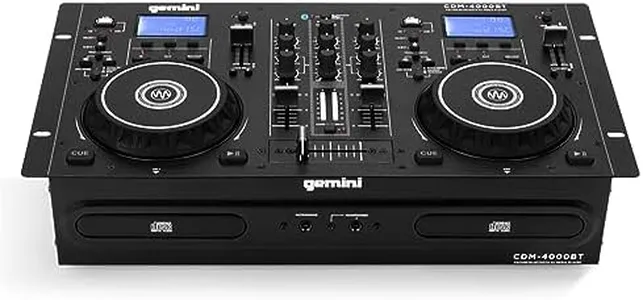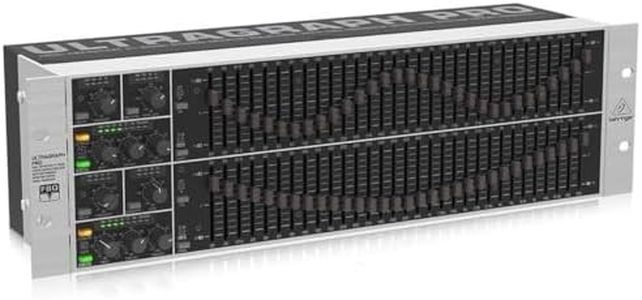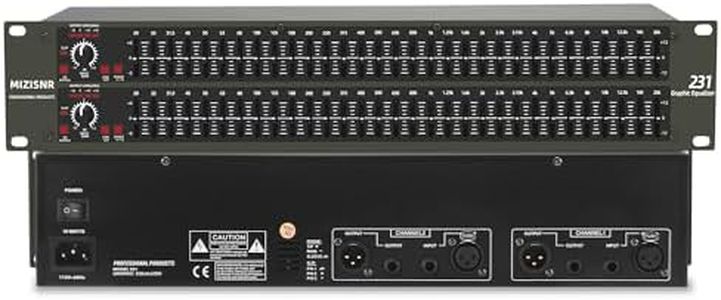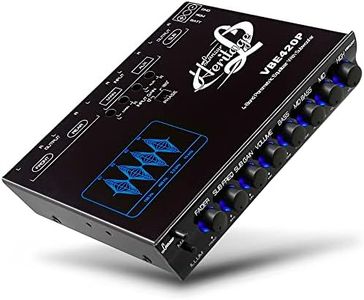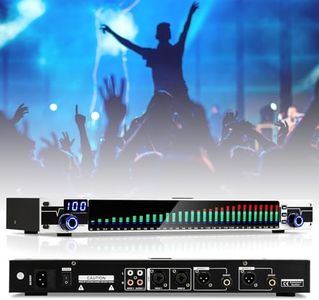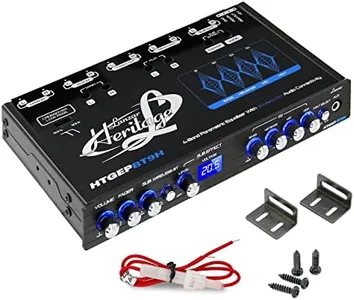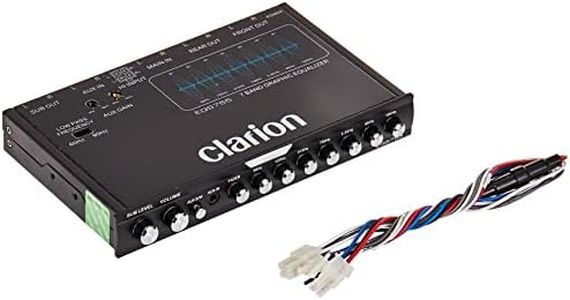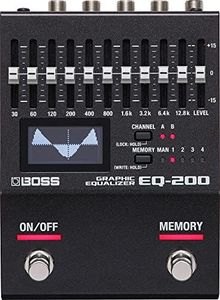10 Best Stereo Equalizers 2025 in the United States
Our technology thoroughly searches through the online shopping world, reviewing hundreds of sites. We then process and analyze this information, updating in real-time to bring you the latest top-rated products. This way, you always get the best and most current options available.

Our Top Picks
Winner
Behringer FBQ6200HD - 31-Band Stereo Graphic EQ
Most important from
277 reviews
The Behringer FBQ6200HD is a 31-band stereo graphic equalizer that caters well to musicians and audio professionals looking to enhance their sound systems. One of its standout features is the revolutionary FBQ Feedback Detection system, which quickly identifies critical frequencies. This can be particularly useful in live sound settings or studio environments where managing feedback is crucial. Additionally, the integrated pink noise generator allows users to easily adapt their sound systems to different room acoustics, further improving sound quality.
In terms of performance, the FBQ6200HD offers a wide range of adjustment options across its 31 frequency bands, making it versatile for various sound shaping needs. The dedicated limiters for each channel help to prevent distortion, ensuring that your audio remains clear, even at high volumes.
The unit may not be ideal for casual users who are unfamiliar with equalizers or sound engineering, as it requires some knowledge to operate effectively. Also, being a corded electric device, it lacks portability compared to battery-operated options. Its size and weight might be a consideration for those with limited space or who need a more lightweight solution for gigs.
Most important from
277 reviews
Behringer Ultragraph Pro FBQ1502HD 15-Band Stereo Graphic EQ with FBQ Feedback Detection
Most important from
579 reviews
The Behringer Ultragraph Pro FBQ1502HD is a 15-band stereo graphic equalizer that is well-suited for both professional and home audio applications. One of its standout features is the FBQ Feedback Detection system, which helps identify and manage problematic frequencies, making it useful for live sound environments. It also includes a dedicated mono subwoofer output with an adjustable crossover frequency, providing flexibility for integrating with subwoofers.
The additional low-cut filter is a practical feature for eliminating unwanted low-frequency noise, such as floor rumble. The equalizer offers a decent range of adjustment across its 15 bands, allowing for precise tuning of audio signals. It also includes bypass functionality for straightforward comparison between processed and unprocessed signals. The signal-to-noise ratio (SNR) is reasonably good, ensuring that audio quality is maintained without introducing significant noise.
Input and output connections are standard, making it compatible with most audio setups. Some users may find the 15-band adjustment limited compared to 31-band models, which offer more granular control. Additionally, the product dimensions and weight are relatively standard, making it easy to fit into most audio racks or setups. The Behringer Ultragraph Pro FBQ1502HD is a solid choice for those needing a reliable and functional stereo equalizer with effective feedback detection capabilities.
Most important from
579 reviews
MIZISNR Graphic Equalizer 15-Band Stereo EQ for Home Audio, Dual Channel Professional DJ Equalizer, Noise Reduction 1U Rack Mount (EQ-215)
Most important from
23 reviews
The MIZISNR Graphic Equalizer (EQ-215) is a professional-grade, dual-channel stereo equalizer designed for home audio and DJ use. With its 15-band design for each channel, users have the flexibility to adjust audio frequencies by ±12dB, providing extensive customization. This range of adjustment is beneficial for both audiophiles and professionals seeking precise sound control.
The low-cut switch is a handy feature that helps eliminate unwanted low-frequency noise, resulting in clear and dynamic sound output. Additionally, the bypass switch makes machine debugging simple and straightforward. This equalizer is user-friendly and fits well in a standard 1U rack mount, making it easy to install and integrate into existing audio setups.
Most important from
23 reviews
Buying Guide for the Best Stereo Equalizers
Choosing the right stereo equalizer can significantly enhance your audio experience by allowing you to adjust the balance between different frequency components of your audio signal. Whether you're a music enthusiast, a professional sound engineer, or just someone who wants better sound quality, understanding the key specifications of stereo equalizers will help you make an informed decision. Here are the main specs to consider and how to navigate them to find the best fit for your needs.FAQ
Most Popular Categories Right Now
